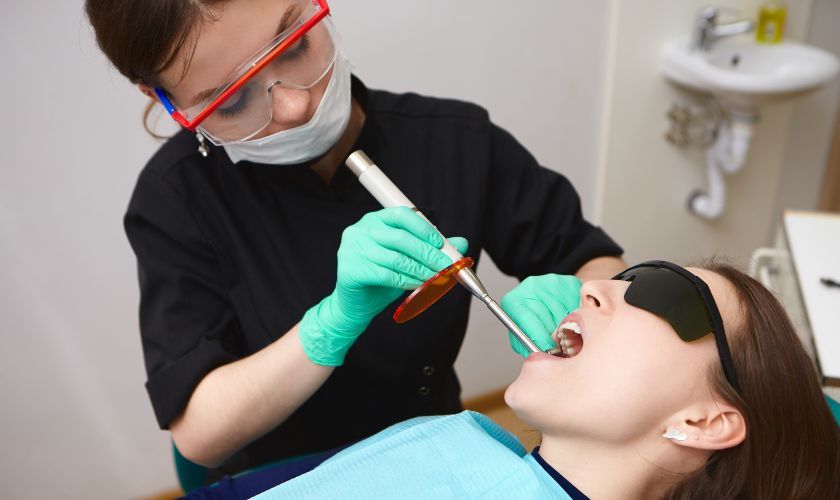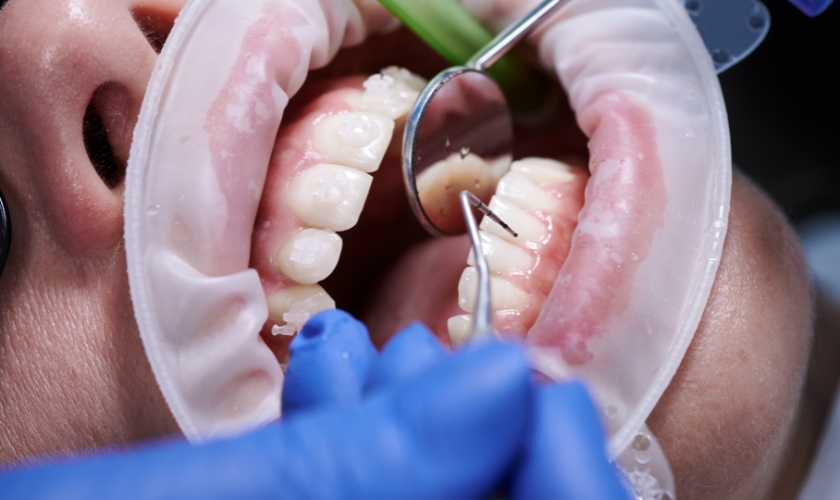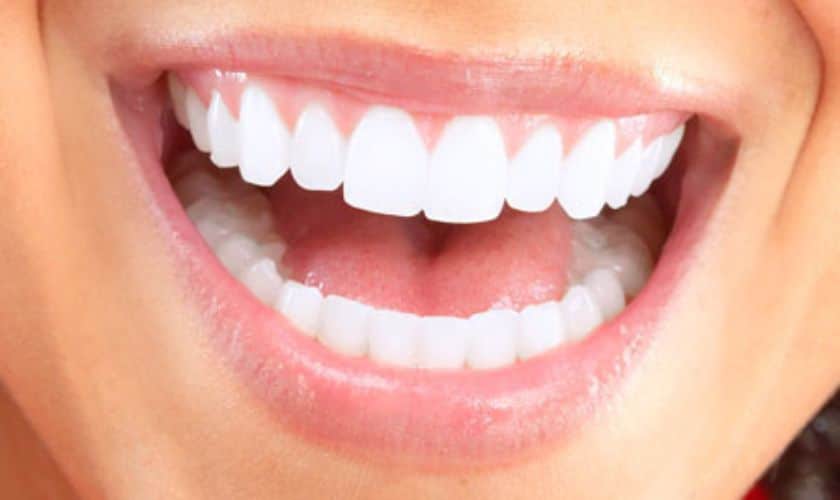(703) 372-5665
Understanding the Different Types of Sedation Dentistry: Which is Right for You

Understanding the Different Types of Sedation Dentistry: Which is Right for You
Looking for a comfortable and anxiety-free dental experience? Sedation dentistry might be the answer you’re looking for! But with so many different types of sedation available, it can be overwhelming to choose the right one. Don’t worry – we’ve got you covered. In this blog post, we’ll break down the various types of sedation dentistry and help you decide which option is best suited for your needs. So sit back, relax, and let’s dive into the world of sedation dentistry!
What is Sedation Dentistry?
Sedation dentistry, also known as sleep dentistry, is a field of dentistry that uses medication to help patients relax during dental procedures. Sedation dentistry can be used for a variety of dental procedures, including but not limited to:
1. Cavity fillings
2. Dental implants
3. Tooth extractions
4. Root canals
Some of the most common types of sedation used in dentistry include:
Inhaled Minimal Sedation: The patient inhales a small amount of nitrous oxide, which helps them to feel relaxed and comfortable during the procedure. This type of sedation wears off quickly and the patient is able to drive themselves home after the procedure.
Oral Sedation: The patient takes a pill prior to the procedure, which helps them to feel relaxed and comfortable during the procedure. The level of sedation can be adjusted depending on the pill dosage. The patient may not be able to drive home after the procedure and will need someone to pick them up.
IV Sedation: The patient is given medication through an IV, which helps them to feel relaxed and comfortable during the procedure. The level of sedation can be adjusted depending on the IV dosage. The patient will not be able to drive home after the procedure and will need someone to pick them up.
The Different Types of Sedation Dentistry
There are four main types of sedation dentistry: oral sedation, IV sedation, nitrous oxide, and general anesthesia. Each type has its own unique set of benefits and risks. The best way to determine which type of sedation is right for you is to speak with your dentist about your specific needs and medical history.
Oral Sedation: Oral sedatives are taken in pill form prior to your appointment. They help to relax you and make the dental procedure more comfortable. Oral sedatives can range from mild to moderate in strength. The most common side effect of oral sedation is drowsiness.
IV Sedation: IV sedation is administered through a small needle placed in your arm. It helps to relax you and make the dental procedure more comfortable. IV sedation can range from mild to moderate in strength. The most common side effect of IV sedation is drowsiness.
Nitrous Oxide: Nitrous oxide, also known as laughing gas, is inhaled through a small mask placed over your nose. It helps to relax you and make the dental procedure more comfortable. Nitrous oxide is considered a mild form of sedation dentistry. The most common side effect of nitrous oxide is dizziness.
General Anesthesia: General anesthesia is administered through an IV or by inhaling gases through a small mask placed over your nose. It helps to completely relax you and make the dental procedure more comfortable. General anesthesia is considered
Pros and Cons of Sedation Dentistry
There are many sedation dentistry options available, and the right one for you depends on your needs and preferences. Here are some pros and cons of the different types of sedation dentistry to help you make an informed decision:
Oral Sedation Dentistry:
Pros: Oral sedation is one of the most affordable sedation dentistry options. It is also relatively mild, so you will be able to drive yourself home after your appointment.
Cons: Oral sedation can cause side effects such as drowsiness and nausea. You will need someone to drive you home after your appointment.
IV Sedation Dentistry:
Pros: IV sedation is very effective in reducing dental anxiety and providing a relaxed experience. You will not remember anything about your procedure, making it ideal if you have a fear of needles or dental procedures.
Cons: IV sedation is more expensive than oral sedation, and you will need someone to drive you home after your procedure. There is also a small risk of complications associated with IV sedation, such as respiratory problems or allergic reactions.
What to Expect During Sedation Dentistry?
If you have ever been to the dentist, chances are you have had some form of sedation dentistry. Sedation dentistry is used to help patients relax during dental procedures. There are different types of sedation dentistry, and your dentist will choose the one that is right for you based on your medical history and the procedure you are having done.
Some of the most common types of sedation dentistry include nitrous oxide, oral sedatives, and IV sedation. Nitrous oxide, also known as laughing gas, is a gas that you breathe in through a mask during your procedure. It helps you to relax and feel no pain. Oral sedatives are pills that you take before your procedure. They make you drowsy and can help to ease your anxiety. IV sedation is given through a needle in your arm. It puts you into a sleep-like state and allows you to have no memory of the procedure when you wake up.
No matter which type of sedation dentistry you receive, it is important to follow your dentist’s instructions carefully. This includes not eating or drinking anything for several hours before your appointment and arranging for someone to drive you home after the procedure is over.
How to Choose the Right Type of Sedation Dentistry for You
If you’re one of the many people who experience anxiety or fear when visiting the dentist, sedation dentistry may be a good option for you. But with so many different types of sedation available, how do you know which is right for you?
Here’s a quick rundown of the different types of sedation dentistry and what they entail:
Mild Sedation: Also known as “minimal sedation,” this is the lightest form of sedation. You’ll likely be given a pill to take before your appointment, which will make you drowsy but still awake and able to respond to questions and follow instructions.
Moderate Sedation: Moderate sedation, also called “conscious sedation,” will make you more relaxed than mild sedation but you’ll still be awake. You may be given a pill to take before your appointment or receive an IV during your procedure.
Deep Sedation: Deep sedation is similar to general anesthesia and you will not be awake during your procedure. This type of sedation is usually only used for very complex procedures or if you have a severe dental phobia.
Now that you know a little bit more about the different types of sedation available, it’s time to talk to your dentist about which option is right for you. Be sure to let them know about any medical conditions you have and any medications you’re currently taking, as this can affect which type of sedation is best for you
Conclusion
Sedation dentistry is a great way to help reduce the fear of the dentist and make dental appointments much more comfortable. Each type of sedation has its own benefits, so it’s important to understand which one may be best for your individual needs. If you are debating whether or not to try sedation dentistry, consider talking with your dentist about all of your options and what type would be best for you. With the right choice, you will walk out of the office feeling relaxed and ready for a beautiful smile!
FAQs
1. What is sedation dentistry?
Sedation dentistry is a branch of dentistry that uses medication to help patients relax during dental procedures. There are different levels of sedation, from light sedation (also called minimal sedation) to deep sedation (also called general anesthesia).
2. Who can benefit from sedation dentistry?
Patients who have anxiety or fear about dental procedures can often benefit from sedation dentistry. Sedation can also be helpful for patients who have a strong gag reflex or who need to have a lengthy procedure done.
3. What types of procedures can be done with sedation?
Almost any type of dental procedure can be done with sedation, from simple cleanings to more complex procedures like root canals or extractions.
4. How do I know if I need sedation?
Your dentist will evaluate your medical history and discuss your concerns and goals for treatment before recommending whether or not you would benefit from sedation dentistry.






